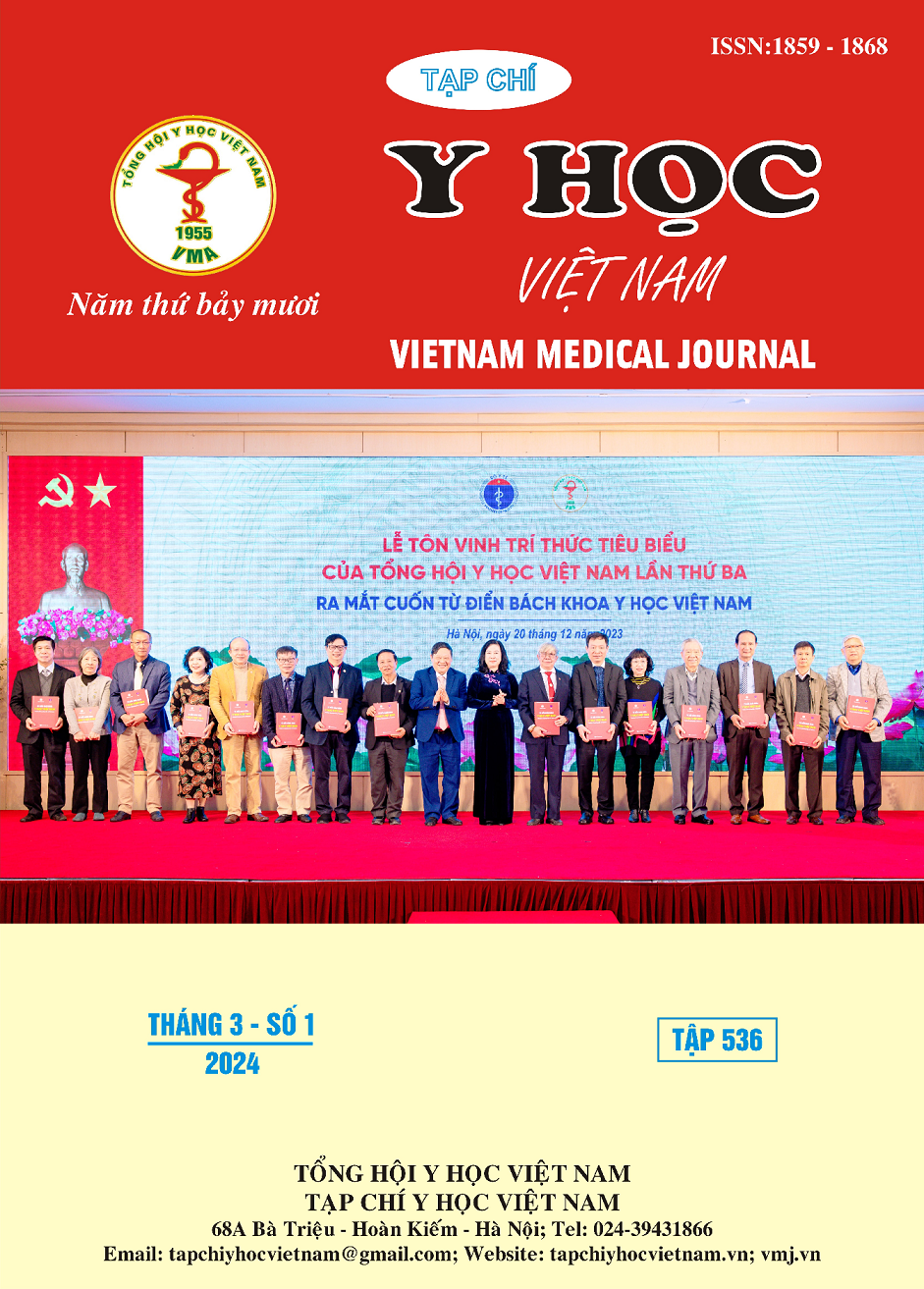THE RELATIONSHIP BETWEEN PLATELET AGGREGATION WITH SOME CLINICAL AND SUBCLINICAL FEATURES IN CORONARY ARTERY DISEASE PATIENTS TREATED WITH ASPIRIN AND/OR CLOPIDOGREL
Main Article Content
Abstract
Aim: Evaluate the relationship between platelet aggregation and some clinical and paraclinical characteristics in coronary artery disease patients treated with Aspirin and/or Clopidgrel. Objects and method: Prospective, cross-sectional study on patients with coronary artery disease aged 18 years or older who were monitored for treatment at the Department of Cardiovascular Intervention - 175 Military Hospital during the period from November 2021 to September December 2022. Results: In 201 patients studied, men accounted for 74.63% and women accounted for 25.37% with an average age of 62.83 ± 11.02. There was no statistically significant difference in platelet aggregation and Clopidogrel/Aspirin resistance according to age and gender. The differences in platelet aggregation and resistance to Aspirin and/or Clopidogrel between clinical types are not statistically significant. The anemic patient group had significantly higher platelet aggregation and Clopidogrel resistance rates than the non-anemic patient group (p<0.05). The group of patients resistant to Clopidogrel had a significantly higher average platelet count than the group of non-resistant patients (p<0.05). The group of patients using PPIs had significantly higher platelet aggregation and drug resistance rates than the group of patients not using PPIs (p<0.05). Conclusion: The group of patients with anemia and using PPIs had higher platelet aggregation and drug resistance than the group of patients without anemia and not using PPIs (p<0.05). The group of patients resistant to Clopidogrel had a significantly higher average platelet count than the group of patients without resistance (p<0.05).
Article Details
References
2. Gander J, Sui X, Hazlett LJ et al. (2014). Factors related to coronary heart disease risk among men: validation of the Framingham Risk Score. Prev Chronic Dis, 11:E140.
3. Lê Tùng Lam (2012). Nghiên cứu độ ngưng tập tiểu cầu ở bệnh nhân trước và sau can thiệp đặt stent động mạch vành. Luận văn Thạc sỹ y học. Trường đại học Y Hà Nội.
4. Nguyễn Minh Hùng (2019). Nghiên cứu hiệu quả điều trị một số tổn thương động mạch vành bằng phương pháp nong bóng có phủ thuốc. Luận án Tiến sỹ y học. Đại học Y Hà Nội.
5. Trần Thị Hải Hà. (2017). Nghiên cứu biến đổi độ ngưng tập tiểu cầu, số lượng tiểu cầu, nồng độ Fibrinogen ở bệnh nhân đau thắt ngực ổn định được can thiệp động mạch vành qua da có sử dụng Clopidogrel. Luận án Tiến sỹ y học. Học viện Quân y.
6. Vũ Hồng Điệp. (2000). Một số nhận xét về độ ngưng tập tiểu cầu ở người cao tuổi bình thường. Tạp chí Y học thực hành, 2:36-37.
7. Haque SF, Matsubayashi H, Izumi S et al. (2001). Sex Difference in Platelet aggregation Detected by New Aggregometry Using Light Scattering. Endocr J, 48(1):33-41.
8. Becker DM, Segal J, Vaidya D et al. (2006). Sex Differences in Platelet Reactivity and Response to Low-Dose Aspirin Therapy. JAMA, 295(12):1420-1427.
9. Sibbing D, von Beckerath O, Schömig A et al. (2007). Impact of body mass index on platelet aggregation after administration of a high loading dose of 600 mg of clopidogrel before percutaneous coronary intervention. Am J Cardiol, 100(2):203-5.
10. Funck-Jensen KL, Dalsgaard J, Grove EL et al. (2013). Increased platelet aggregation and turnover in the acute phase of ST-elevation myocardial infarction. Platelets, 24(7):528-37.


